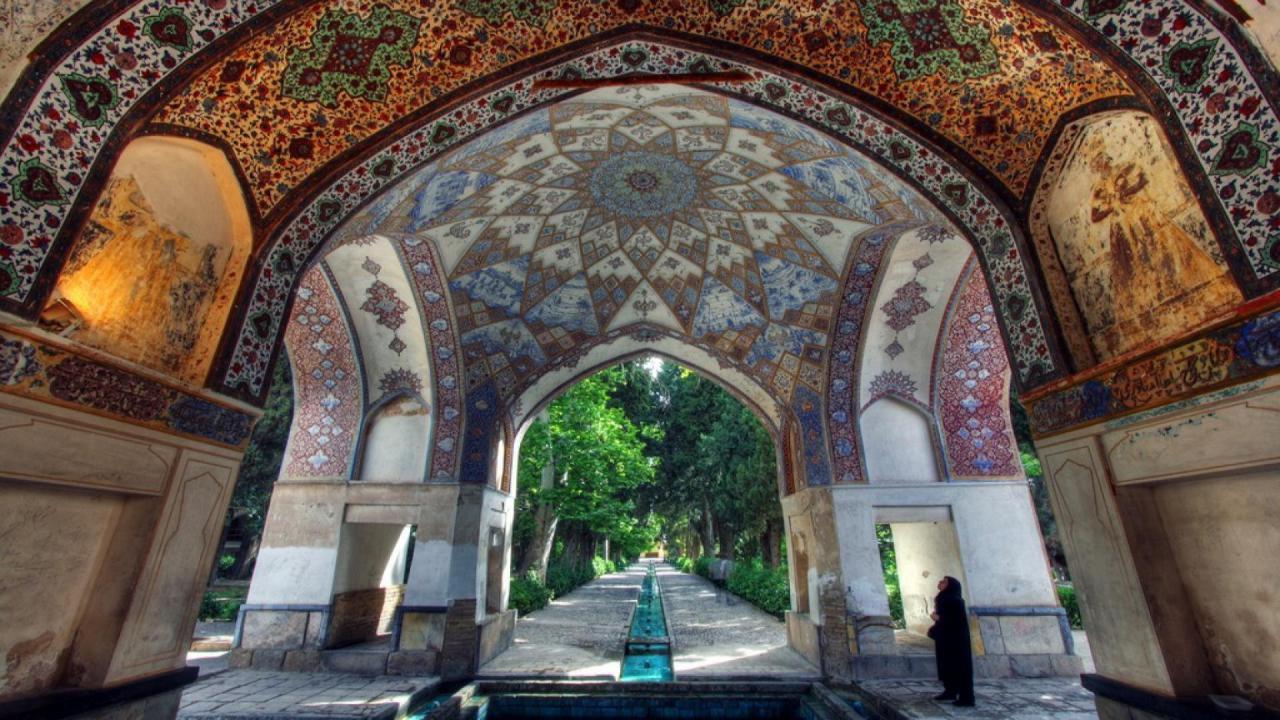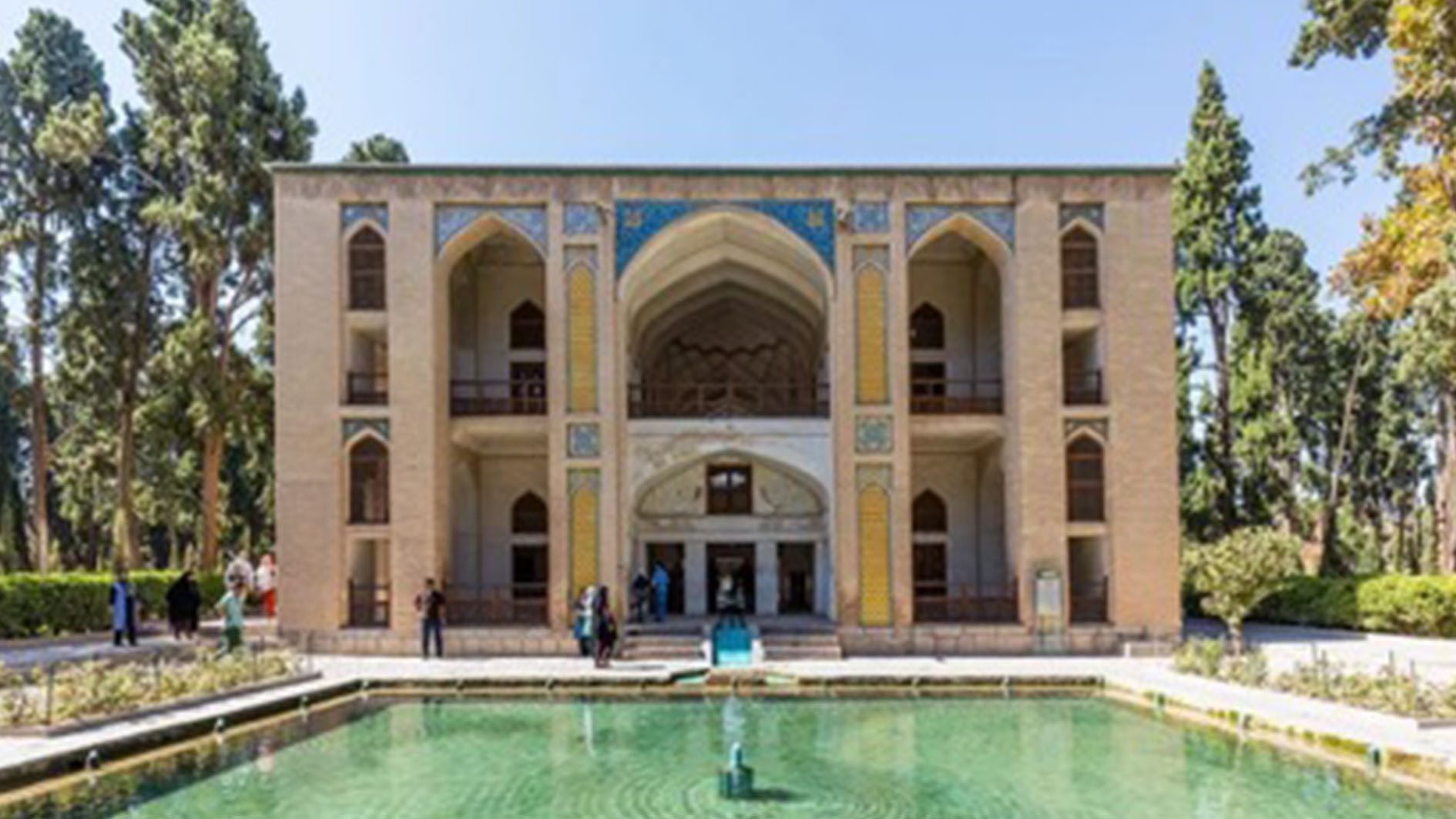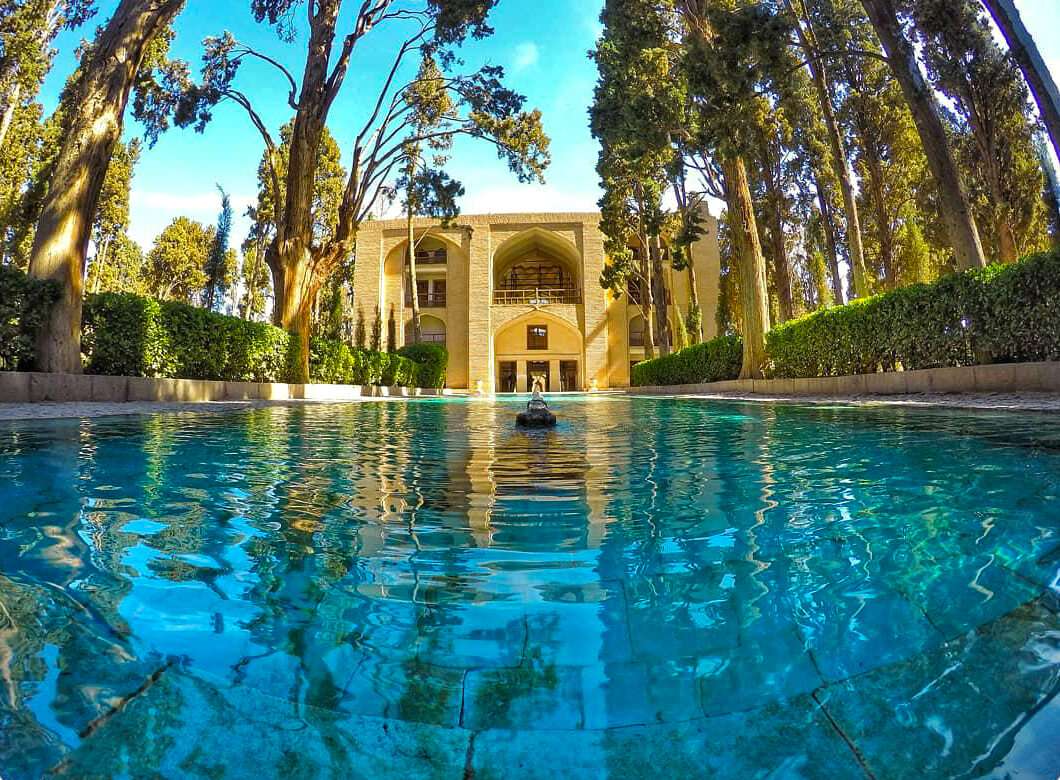The world-famous Persian garden is purely represented by Fin Garden, in the city of Kashan in Iran. Cypress and plane trees claim the sky of the garden which is located in the middle of the desert. The garden has been registered as a UNESCO World Heritage Site, as an example of the Persian Garden.
Fin Garden occupies an area of over 23000 square meters, encapsulated by walls and cylindrical battlements. The structure of the garden follows that of the Persian Garden, with pools and streams of water irrigating the entire area.
History
The very name of Fin Garden has become synonymous with the tragic events that took place there in Qajar period. But “When was the Fin Garden built?”. An Iranian will most probably tell you they know that it existed at least 200 years ago.
In fact, it dates further back to at least the 11th century. Much of the buildings built back then were demolished in an earthquake in 16th century. The relics can be found in an area near the current garden, which is called the old garden. The buildings in today’s garden date back to the Safavid and Qajarid periods, from 17th to 20th centuries.

But what is the Fin Garden famous for?
Fin Garden has witnessed one of the most tragic incidents of Iran’s history. In 19th century, Iran was ruled by the Qajar dynasty. The crown prince Nasir al-Din Shah was too young when his turn for taking the throne came about. Because of his inexperience, he appointed his trusted tutor as his prime minister. His tutor was none other than Mirza Mohammad Taghi Khan Farahani, titled as Amir Kabir.
Amir Kabir was one of the most prudent politicians the history of Iran has ever seen. He is famous for the reforms he carried out in different areas. He is known for the establishment of Darolfonoon School in Tehran, the first institute of higher education in Iran. The polytechnic specialized in modern technologies, engineering, applied sciences, and natural sciences.
In addition, he also established Vaghaye Etefaghie newspaper, which is considered as the 3rd newspaper published in Iran. It contained news of all that the people had to know about the events occurring in the country. Whoever worked for the government and earned a salary above 200 tomans had to have a membership with the paper.
The list of his reforms doesn’t end here. He fought against bribery and fraud in the court, torture, and the use of unnecessary titles for people (which more often had a sense of flattering). He also made extensive reforms in the affairs related to the country’s treasury, finances, taxes, etc., organized the military, refined the posting system in Iran, brought about major religious and social reforms, and resolved mutinies and silenced riots.
It’s hard to imagine a lot of supporters for him in the royal court, except for the king himself. Finding themselves at a loss, courtiers succeeded to persuade the king to first dismiss the vizier from his position and then to be deported to the city of Kashan.
In Kashan, he stayed at the Fin Garden. But this was not enough, they moved on to convincing the drunken king to have Amri Kabir assassinated. When the Shah’s messenger arrived in the garden, Amri Kabir was in the bathhouse. His wrists and ankles were slit when he was there, creating stains which have remained there until today.
Amir Kabir’s name represents progress, reform, and wisdom in Iran. Many people visit Fin Garden just to see where the great man was slain.

Architecture
The garden follows the layout of Persian gardens and include different buildings. The Persian Garden dates back to at least 3000 years ago. The oldest example of this layout found in Iran is the Pasargadae, made in 6th century BC. The rectangular space of the garden is enclosed by walls, and is marked by symmetrical rows of trees as well as channels of water with fountains.
The entrance of the garden is located in the west and is stretched towards the west. There is usually a pavilion at the further in the west of the garden. The Persian Garden is structured to represent the heaven on the earth.
Once you visit Fin Garden, you will see that it contains all of these elements. Water plays an important role in the garden, as you will see many pools, channels, and springs here. Together with the green environment of the tree, this is a significant achievement in an area with a desert-like climate.

The buildings of Fin Garden
As we said, the garden consists of several structures. Let’s take a quick note about each of these places:
The entrance hall
Upon entering the garden, you will find yourself in an elaborately designed room made of brick.
Kushk-e Safavi
This is a 17th century two story pavilion, which has been built in a square shape and rises to a dome in the center. There is a pool in front of the pavilion, where people throw coins and make wishes. The structure used to have 4 floors. Unfortunately, the building was damaged during an earthquake and only 2 floors were built during the reconstrucions.
Kushk-e Qajari
Another pavilion was built later on, in the southeastern section of the garden. This building is also decorated with amazing indoor decorations with floral paintings and stucco work.
Shah Neshin
The word literally means the king’s sit. This is a room with a small pool and amazing indoor decorations.
Karim Khani Hayat Khalvat
The building was built in the southwest of the garden.
Fin bathhouses: The garden also includes 2 bathhouses. Because they are located in the garden, they are called Fin bathhouses. In one of these bathhouses, Amri Kabir, the vizier of Naser Al-Din Shah was murdered.
The national museum of Kashan
The building of the museum was reconstructed in the 20th century, to host the national museum of Kashan. It includes 3 sections: anthropology, ethnography, and handicrafts.
Pools of Fin garden
In addition to the buildings, there are also many pools in the Fin garden. The water irrigating the garden is mainly provided from the Soleymanie spring, which is located nearby.
One of the pools is called “Howze Joosh”, which can be loosely translated as the springing pool. The tiles covering the pool’s bottom are designed with elaborate patterns symbolic of carpets woven in Kashan.
The pool takes its name from the holes carved into the bottom of the pool. A number of 160 holes, stand for the flowers of the carpet illustrated by the tiles.
The function of the holes is that water is sprung out of every other hole, and drawn in by every other hole. In a sense, every 2 opening next to each other, send water in opposite directions.
Another notable pool is called davazdah favvareh, meaning 12 fountains. They are structured in a way that send water upwards without using any external forces such as an engine.

FAQ
Fin Garden is one of the historical tourist attractions of Kashan, a city in the province of Esfahan, in Iran. Perhaps the most unforgettable event in the history of the garden is the assassination of Amir Kabir, one of the greatest political figures in the history of Iran.
Fin Garden is located in Kashan. It will be easy to access the different tourist attractions of Kashan, such as:
Tappe Sialk
Borujerdi house
Tabatabaee house
Bazaar of Kashan
Congregation mosque of Kashan
Kashan is home to beautiful traditional hotels, hosted in historical houses. But you will also be able to find standard hotels in the city. Some of the most popular hotels near the garden are:
Amir Kabit hotel
Negarestan hotel
Finding a good place to eat can be one of the biggest challenges of your trip. But you don’t need to worry. Once you visit the garden, then you can have a meal in one of the following places to eat and drink:
Fin Garden restaurant
Sadat Traditional restaurant
Soleymaniyeh garden restaurant
Bagh-e Behesht restaurant
Jamshidi restaurant
The garden is a tourist attraction which works every day, from 9:00 AM to 4:30 PM.



Comment (0)